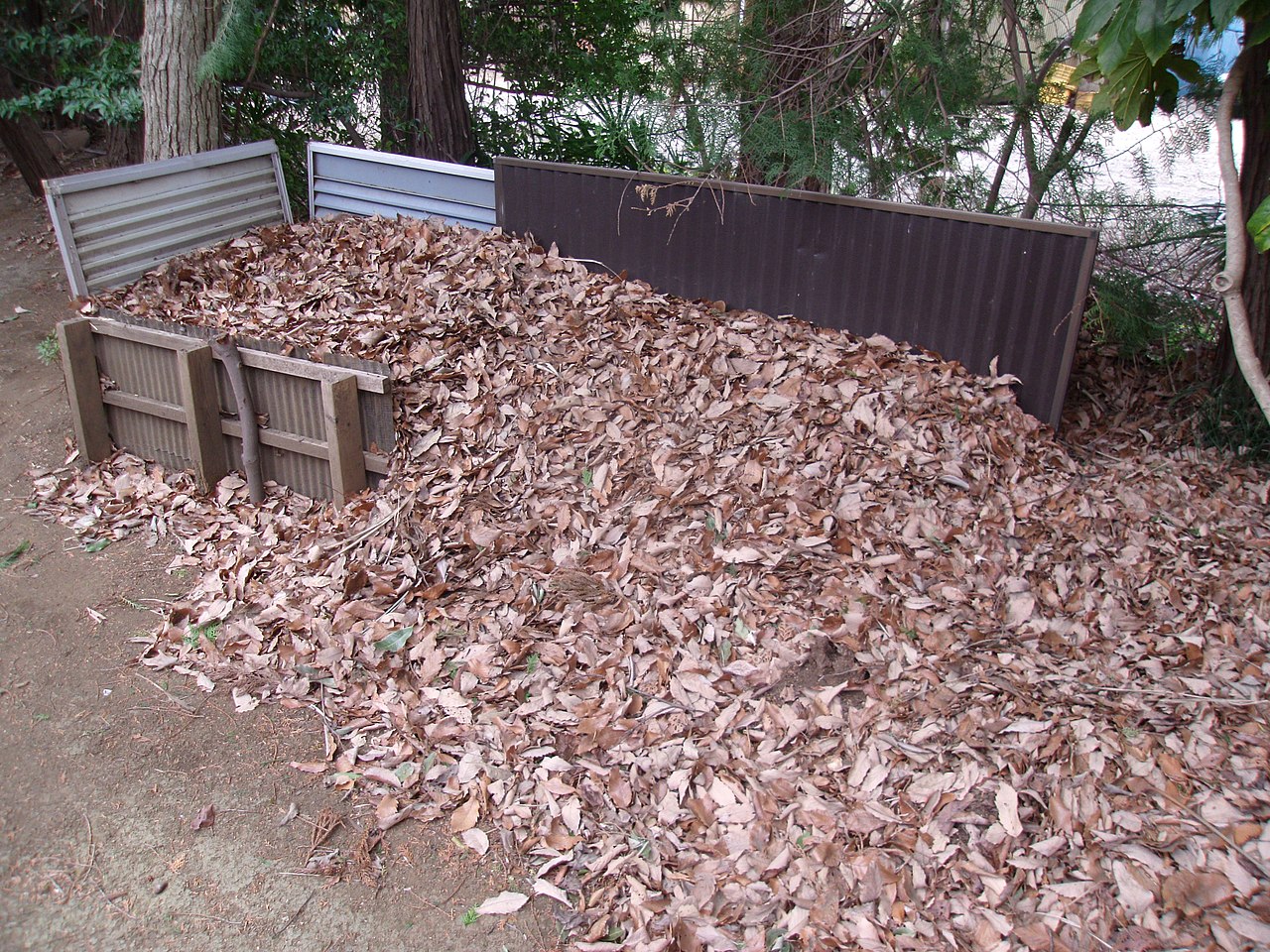Leaf mold is compost made entirely from broken-down leaves. Leaf mold differs from compost in that compost involves bacterial breakdown, whereas leaf mold involves fungal breakdown. In comparison to compost, leaf mold is a much better soil amendment. However, compost contains more nutrients beneficial to plants.
Leaves can be left in a corner of the garden for a few years and will break down naturally. By running a lawnmower over the leaves, you can speed up the process.
Table of Contents
What is leaf mold?
Leaf mold, also known as leaf mulch, is a form of compost made entirely from shade tree leaves.
As moist leaves decompose over time, they produce crumbly, earthy humus with a dark brown to black color.
It is great for soil, but it does not add a lot of nutrients to the soil, so it would be better to use it as a mulch in flower beds or a vegetable garden than as an organic fertilizer.
There are many benefits of leaf mold and a few disadvantages.
| Leaf mold pros | Leaf mold cons |
| It’s a great soil conditioner | Requires fallen leaves or autumn leaves from deciduous tree |
| Mold increases water retention by more than 50% | Takes a long time |
| Fruit and vegetable yields are boosted by leaf mold | Can become Infested with weeds |
| It’s eco-friendly to turn yard waste into leaf mold | Can suffocate surrounding grass blades |
| No maintenance in production of leaf mold | Not an effective insulation/mulch |
What is compost?
During composting, organic matter, such as leaves and food scraps, is recycled into valuable fertilizer that can enrich the soil.
Compost piles or compost bins are excellent solutions for processing organic waste and the end product is wonderful for garden beds and vegetable gardens.
| Compost pros | Compost cons |
| Soil erosion prevention | Meat/dairy might create pathogens & attract pests when composted |
| Helps manage stormwater | Food waste needs to be stored until it can be buried |
| Enhances plant health | Hot composting requires regular maintenance |
| Saves water | Cold composting is slow |
| Waste is reduced | Can be smelly |
| Enhances soil health | Requires initial investment |
How long does it take to make leaf mold?
It takes a year or 2 years for leaf mold to reach the right maturity.
Is leaf mold good for all plants?
Think of leaf mold as a soil conditioner. It’s great as a soil amendment.
However, the nutrients contained in leaf mold are not as beneficial as those found in traditional compost.
Use leaf mold to make sure your plants stay healthy.
Use compost to establish new plants.
Is leaf mold acidic or alkaline?
The pH of most leaves when they fall is slightly acidic, with a value of less than 6. Nevertheless, as the leaves decay into leaf mold, the pH rises to more of a neutral level.
While leaf mold will not correct pH problems, it will have a moderating effect on them.
When to use leaf mold?
As soon as the leaf mold becomes soft and crumbly, it is ready to be used. Plant it around your perennials, vegetable plants, and shrubs, no thicker than 3 inches.
Leaf mold retains a great deal of moisture, so keep it several inches away from the plant’s crown or base.
When to use compost?
In the spring or fall, add compost to your soil. It is beneficial to compost in the spring in order to boost the growth of new plants. By adding compost in the fall, the ground becomes healthier.
Can I put leaf mold in compost?
A leaf mold is simply composted leaves. Rather than adding a lot of organic matter to a pile, you use only leaves.
More than two years old leaf mold can be mixed with sharp sand, garden compost and good quality soil for use as potting compost.
How do you speed up leaf mold?
Leaf mold can be sped up in three ways:
- Leaves should be shredded. You can shred the leaves with a shredder to give the microorganisms more surface area
- Keep it hydrated and shaded. Leaves stay moist in the shade where evaporation is reduced
- Put nitrogen in it
What leaves should not be composted?
The bad leaves for composting are those with a high level of lignin and a low level of nitrogen and calcium.
These include beech, oak, holly, and sweet chestnut trees.
In addition, black walnut and eucalyptus leaves contain natural herbicides that prevent seeds from germinating.

